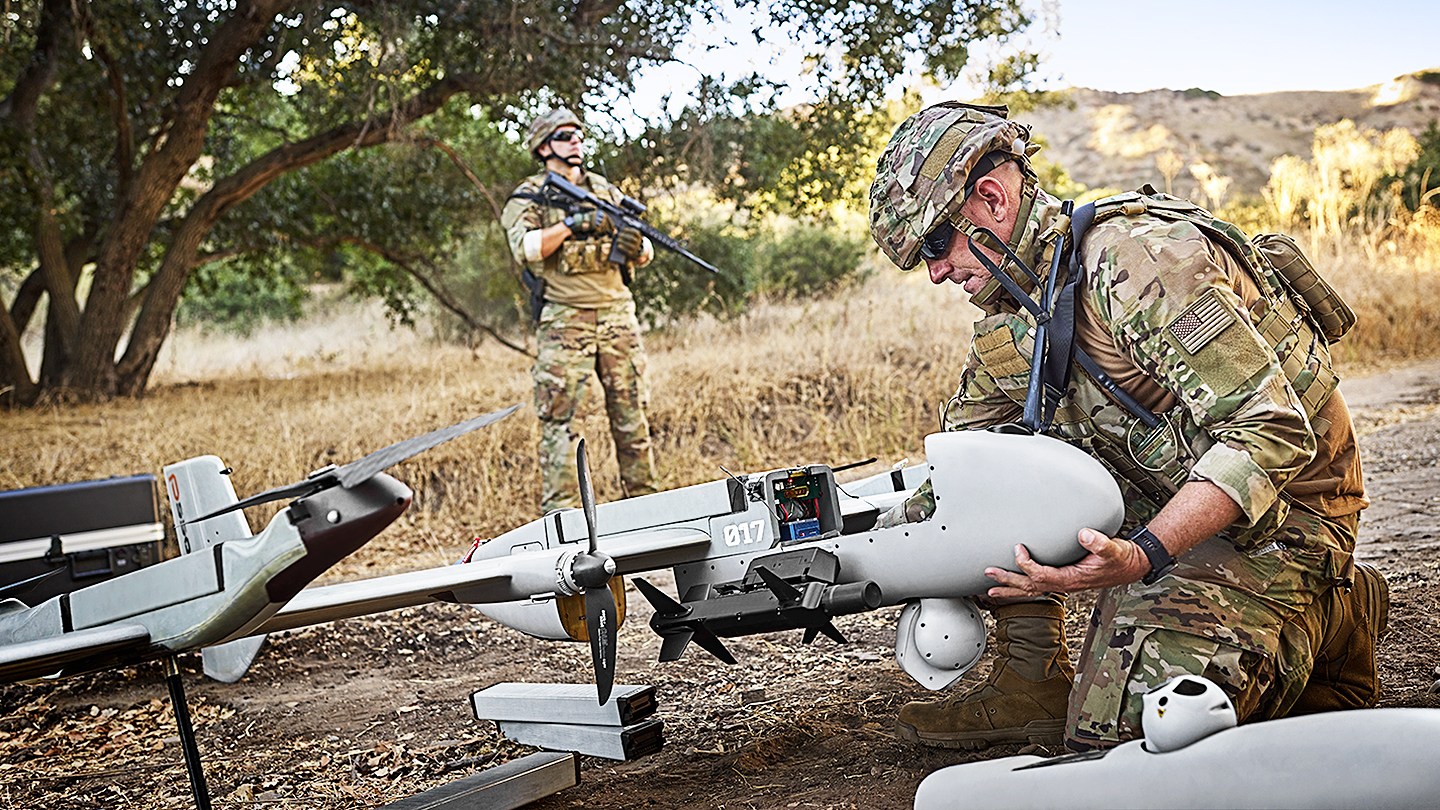AeroVironment on Monday unveiled its new drone that can tote weapons and conduct surveillance for up to five hours on a single charge as the company vies for a spot in the Army’s Long-Range Reconnaissance program.
The P550, a highly modular battery-powered unmanned aerial system that can take off and land vertically and is able to carry up to 15 pounds of munitions and sensors, made its debut at the Association of the U.S. Army’s annual meeting in Washington. It’s a fresh entrant in a fast-paced competition that looks to improve soldiers’ real-time battlefield awareness at relatively low cost.
“There are things that fly as long, there are things that carry as much, but there’s nothing that does both of that … without being fueled in some manner,” Product Line Manager Cris Cornell said Monday. “There’s nothing on the market performing like that in this space.”

Soldiers already use small drones like AeroVironment’s hand-launched RQ-11 Raven for battlefield recon. But the LRR program — part of a broader effort to expand the Army’s arsenal of small drones capable of operating at various altitudes and ranges — promises to bring on a new generation of easily transportable drones that can strike targets while relaying combat data back to troops.
The reusable P550 builds on the company’s Raven and Puma drones but adds VTOL capability and room for heavier payloads. Measuring about 17 feet wide, 9 feet long and weighing up to 55 pounds, the Group 2 UAS is designed to be a light lift on the battlefield, easy to assemble and simple to operate and upgrade.
That wingspan allows the P550 to ferry multiple weapons and sensors at once, in an expansion of capability over AeroVironment’s existing designs.
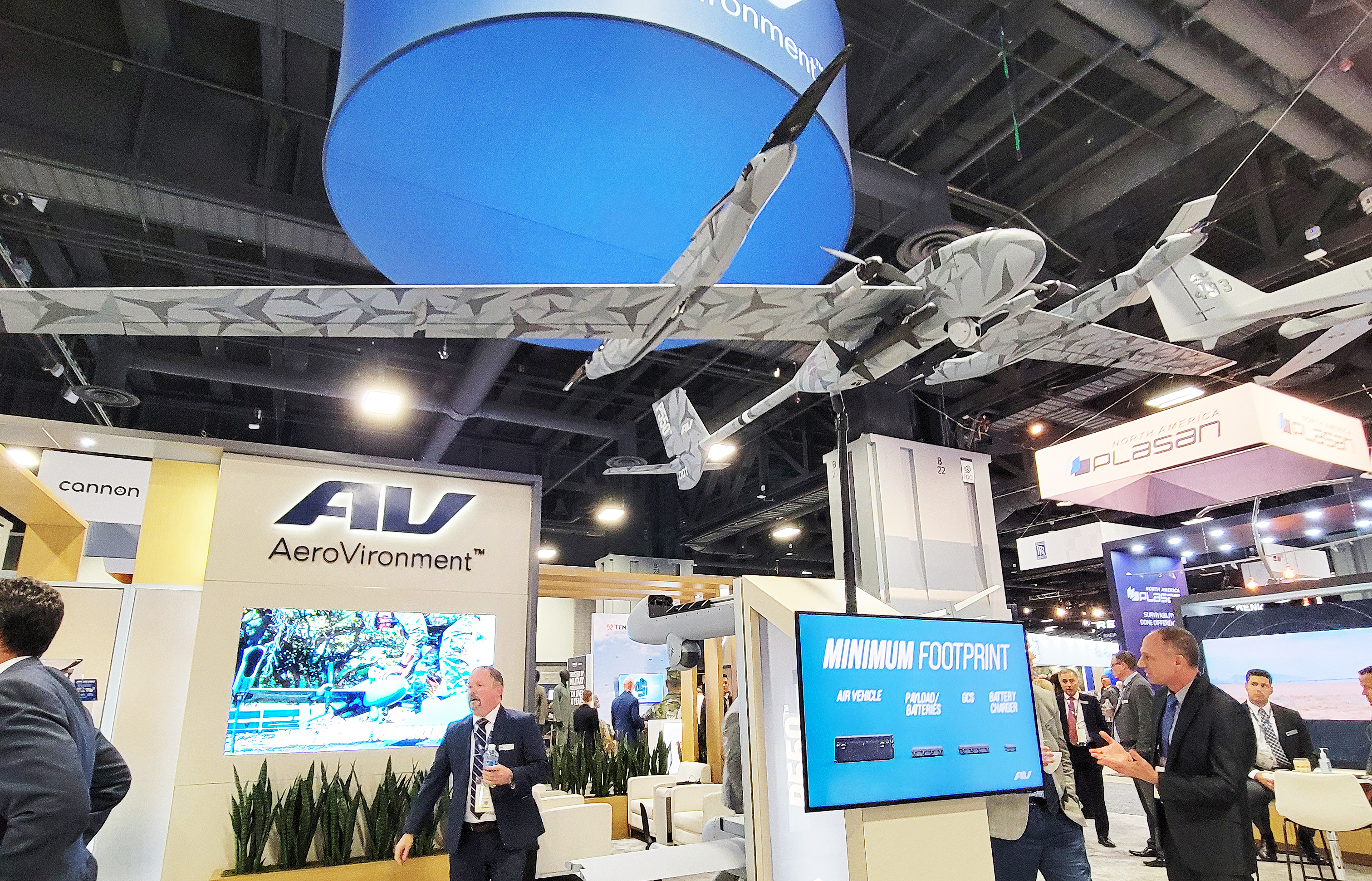
The war in Ukraine has proven that the U.S. must adopt a strike role for its growing arsenal of small drones to remain lethal and relevant, Cornell said.
“You’ve got to be able to carry stuff — and not just stuff, you’ve got to be able to carry munitions,” Cornell said.
The P550 can fly with the GPS-guided Shryke, a munition weighing less than 2.5 pounds developed by L3Harris and Corvid Technologies; Cornell said the company is exploring other options as well.


The display at AUSA showed the drone’s fuselage outfitted with a surveillance payload, a signals-intelligence payload and a communications payload to demonstrate its ability to handle multiple missions compared to its predecessors.
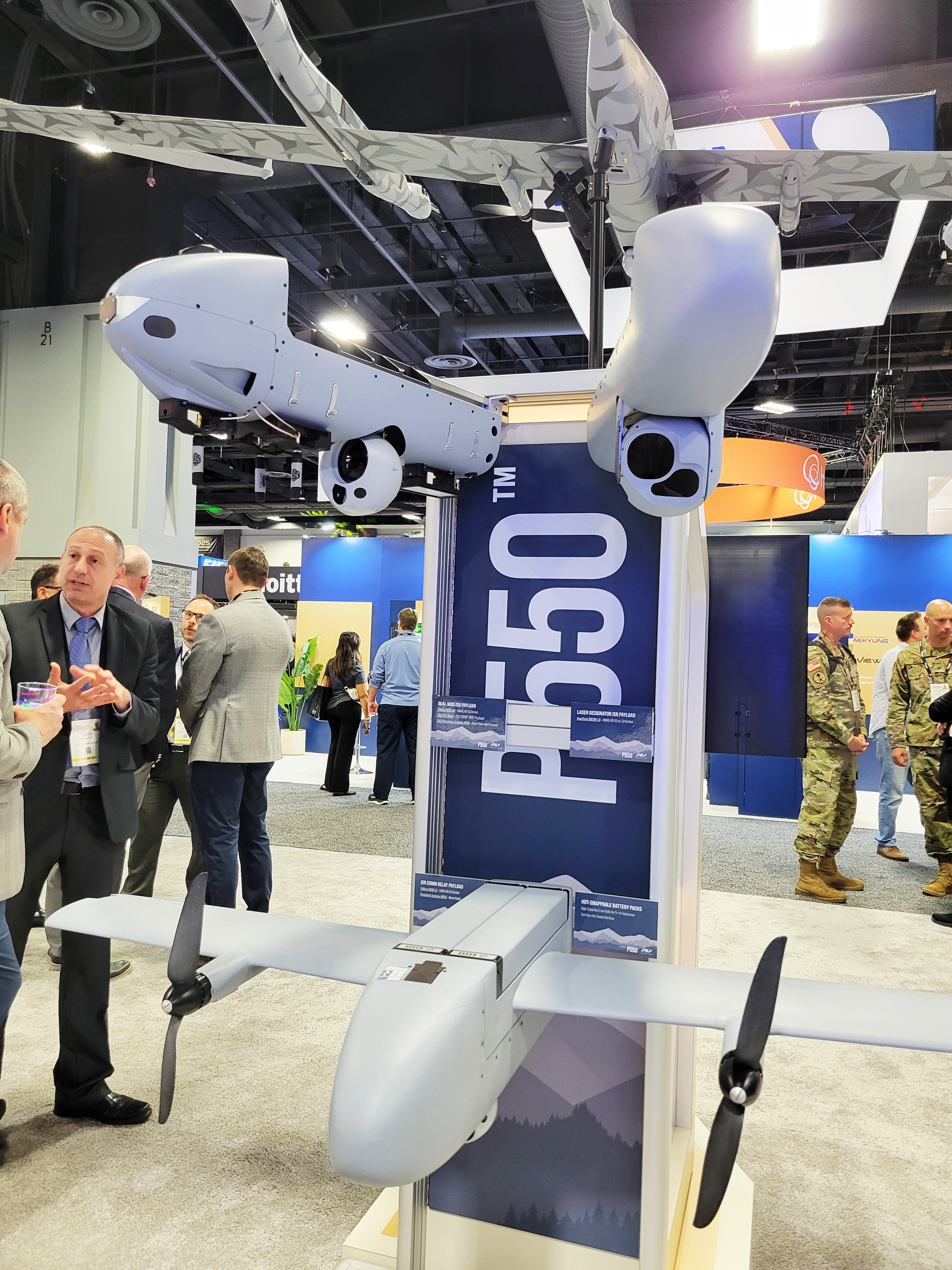
Each aircraft can automatically recognize and catagorize targets, freeing up soldiers who would otherwise sift through imagery and other data for hours each day, and transmit that information via data link. It can also save its findings for later in case enemy jamming prevents it from sending the data in real time or for when emissions control is critical to survival.
As the data link market has expanded, it’s become more feasible to design a drone that can connect anywhere — unlike the P550’s predecessors and older legacy systems, said Trace Stevenson, AeroVironment’s senior vice president of uncrewed systems.
That relies on a modular open systems approach that aims to keep today’s UAS flexible in combat and could stop it from becoming obsolete in a matter of months or a handful of years. AeroVironment in April announced it had partnered with Parry Labs to design the P550’s software and plug-and-play mission systems.
“It’s radio-agnostic, payload-agnostic and [ground control station]-agnostic,” Stevenson said. “We have the common standards that allow the customer to determine what they want to put on the platform. As technology evolves, it’ll be able to incorporate any of those … battery packs, payloads, ground control stations going forward.”
That’s another lesson learned from Ukraine, Cornell said: “[The battlefield] changes so fast, and you have to have your system set up to be able to adapt to it.”
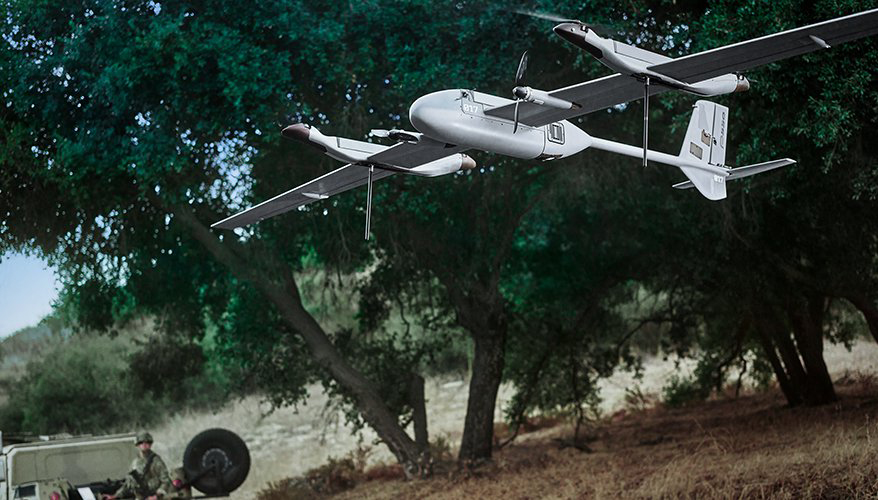
Soldiers don’t need tools to assemble or disassemble the P550; the drone breaks down into three cases that can be tossed on the back of a Joint Light Tactical Vehicle or packed up as part of a larger pallet of equipment.
Battalions can be “up and flying in under 10 minutes and have eyes on top of them out to 40 km-plus range” to scout out a route ahead, watch enemy movement and more, Cornell said.
“We can do searches, map an area, find out where all the targets are, pass those targets to different elements,” he said.
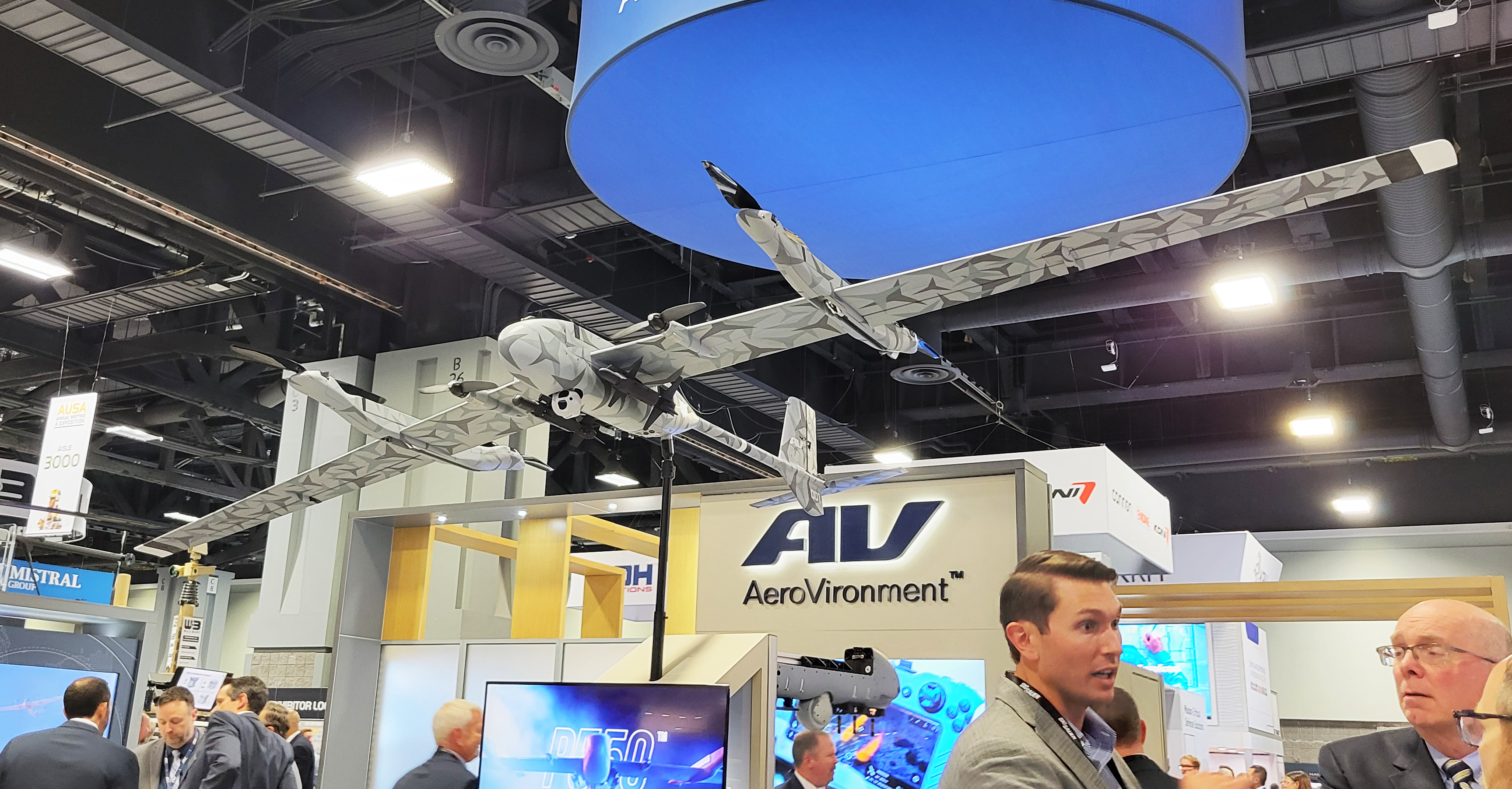
The P550 has already begun flight testing and demonstrations for potential customers.
In January 2023, the Army called on industry to offer options for a drone that could vertically take off and land and collect intelligence over nearly 19 miles and at least five hours in flight.
The service plans to tap two vendors to mature their designs within the next few months before picking a winner, Stevenson said. Budget documents project it will begin buying the aircraft in fiscal 2027.
The Army looks to buy upward of 600 drones for LRR, Cornell said. Soldiers could use a few in tandem to monitor a larger area, but aren’t likely to deploy them in groups of dozens at a time, he added.
Officials across the military want to buy legions of drones, large and small, to grow the number of eyes in the sky and multiply their strike capability while sparing fewer dollars to replace a more advanced aircraft if it goes down.
Stevenson said the company is preparing to build thousands of P550s each year. The AeroVironment reps declined to answer how much the UAS costs per unit.
Contact the editor: Tyler@twz.com
